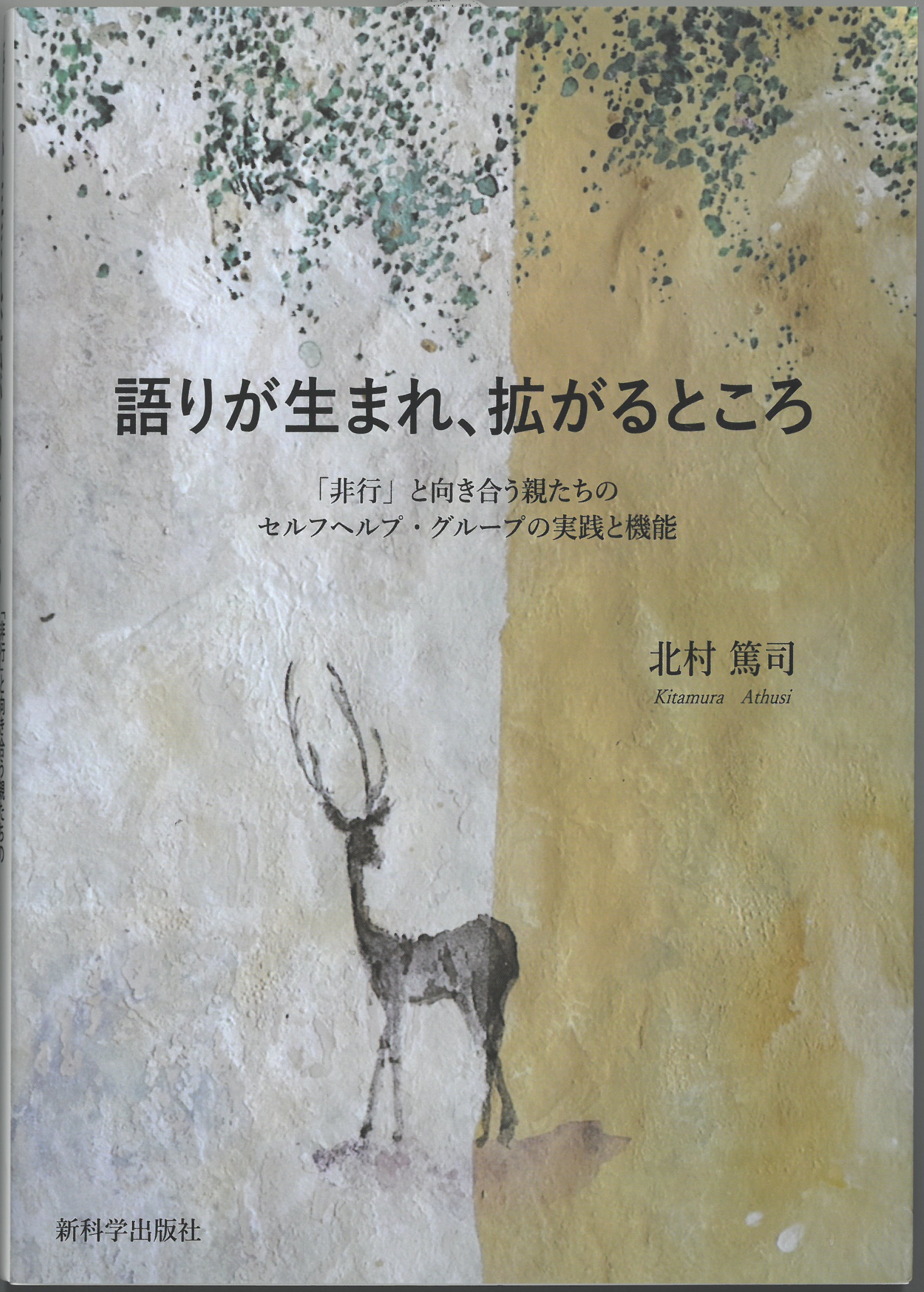
Title
Katari ga umare hirogaru tokoro (Where narratives are generated and expanded - The practice and function of the self-help group for parents dealing with children’s “delinquency”)
Size
219 pages
Language
Japanese
Released
July 30, 2018
ISBN
978-4915143564
Published by
Shinkagaku Shuppan-sha
Book Info
See Book Availability at Library
Japanese Page
This book examines the practice of the self-help group for parents dealing with their children's “delinquency” from the viewpoint of “narrative.” While there may be many people who cannot imagine a group for parents with delinquent children, those part of it get together to share their anxiety and pain, for example, “I can't stop my child from leaving home late at night,” “I don't know what to do as a parent,” and “I blame myself.” When I first attended a meeting of the group, I listened to parents’ distressing stories and felt their anguish. At the same time, however, they somehow managed to create a lively atmosphere during the meeting, which impressed me. There were smiles as well as tears. I was also moved by how each participant's narrative changed. I felt that the meeting held an important meaning. This book discusses, through three questions, the significance and function of this self-help group.
The first question is how participants' narratives and experiences change. When a child causes an incident or a problem, it is the parent who faces the possibility of criticism from others. Therefore, it is difficult to openly talk about the “delinquency” of one’s children. When they first attend a meeting, some participants cannot stop crying or speak well. However, after listening to other participants’ narratives, and talking about their own experiences and changing the way they look at and interact with their children, new narratives are generated. It has been observed that the view of the story expands when the narrative changes.
The second question is how participants construct new narratives. A narrative can be acted out in front of a specific listener at a particular time and place, and the situation and listener are related to its construction. In addition, images and stories that are dominant in society also affect narratives. Critical views against parents of delinquent children include “children get involved in delinquency because their parents are not decent” and “parents must stop their children’s delinquency,” and these have an impact on parents. I discuss how the group supports parents in distancing themselves from the dominant story and creating new narratives.
The third question is on the relationship between the self-help group and professionals. The group allows not only parents who have delinquent children but also people from all walks of life to participate. I examine how professionals are involved in the construction of narratives. Here, the possibility of collaboration between the parents and professionals beyond the labels of “parent” and “professional” is presented.
I hope that this book gives you an opportunity to expand your view of “delinquency” and families with delinquent children.
(Written by: KITAMURA Atsushi / October 28, 2020)



